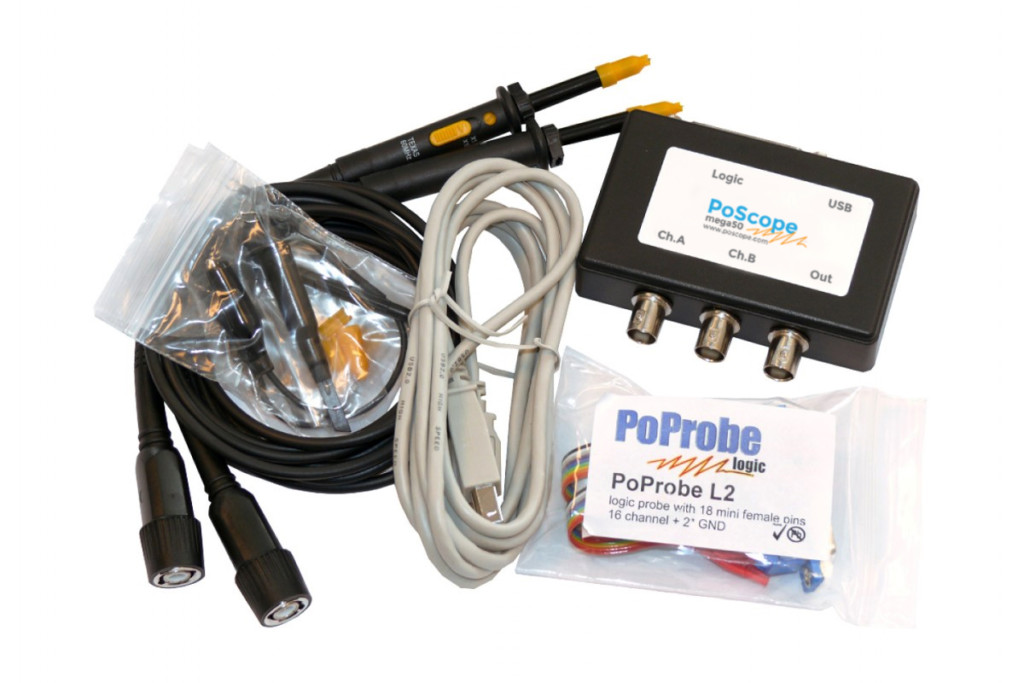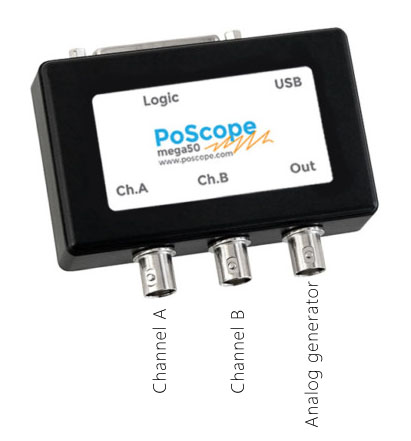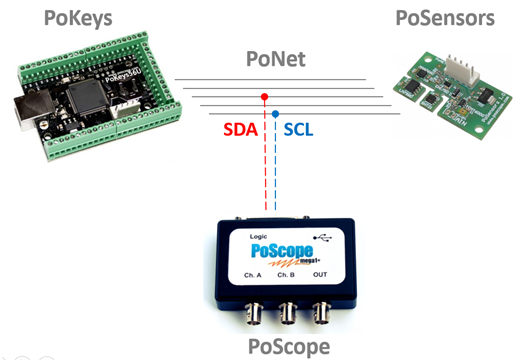Connecting the Dots: PoKeys57E, RC Simulator Interfaces and DAQ Devices in Action
In the modern world of electronics, automation, and data acquisition, hobbyists and professionals alike are constantly exploring tools and devices that simplify complex tasks and enhance efficiency. From building custom interfaces for remote control simulators to monitoring environmental conditions with compact single-board computers, the possibilities are vast and exciting. Four areas in particular stand out for their versatility and practical applications: the PoKeys57E, a multifunctional I/O device; rc simulator interfaces, which bridge the gap between virtual and physical remote control systems; Raspberry Pi temperature loggers, which allow precise monitoring of thermal environments; and DAQ devices, which are essential for capturing, analyzing, and utilizing data from a variety of sensors. Understanding these tools not only opens doors to more sophisticated projects but also provides insight into the growing intersection between electronics, computing, and real-world applications.
Throughout this article, we will explore each of these topics in depth, answering key questions about their purpose, functionality, and use cases. Whether you are a seasoned engineer, an electronics hobbyist, or someone curious about data acquisition and automation, this guide will offer detailed explanations and practical insights. From configuring the PoKeys57E for complex tasks to designing a Raspberry Pi temperature logger, and from setting up an rc simulator interface to understanding the capabilities of DAQ devices, each chapter aims to provide clarity and inspiration for your next project.
What is the PoKeys57E and how can it be used in modern electronics projects?
The PoKeys57E is a versatile and powerful I/O device designed to bridge the gap between digital and analog signals, offering extensive control capabilities for both hobbyists and professional engineers. At its core, the PoKeys57E provides multiple input and output channels, including digital inputs, analog inputs, relay outputs, and pulse-width modulation (PWM) outputs, making it suitable for a wide range of automation and monitoring tasks. One of the most notable features of the PoKeys57E is its ability to function as a USB-connected controller, allowing seamless integration with computers and software for real-time data acquisition and device control. This makes the PoKeys57E particularly valuable in projects where precise timing, control, and feedback are essential.
In practical applications, the PoKeys57E can be used to monitor sensors, drive actuators, and even manage entire small-scale automation systems. For instance, in a home automation setup, the PoKeys57E can interface with temperature sensors, motion detectors, and lighting systems, allowing users to create automated routines or respond to environmental changes dynamically. The flexibility of the PoKeys57E also extends to simulation environments, where it can serve as an intermediary between a computer and a physical system, providing accurate control inputs or capturing output signals for analysis. Because the PoKeys57E supports both analog and digital communication protocols, it can communicate with a wide variety of devices, ranging from standard sensors to specialized industrial equipment.
Another key advantage of the PoKeys57E is its compatibility with popular software platforms, which allows users to program complex behaviors without needing deep knowledge of low-level electronics. For example, it can integrate with CNC control software, data logging programs, or even custom scripts designed to manage multi-channel systems. This level of versatility has made the PoKeys57E a go-to choice for those building custom control interfaces, automated test rigs, or experimental setups that require both precision and flexibility. Users can leverage the PoKeys57E to create highly customized systems where each input and output channel is carefully managed to meet the specific needs of a project.

In summary, the PoKeys57E is more than just an interface device; it is a comprehensive tool for monitoring, controlling, and automating diverse electronic systems. Its combination of analog and digital I/O, software integration capabilities, and adaptability for both professional and hobbyist applications ensures that the PoKeys57E remains a central component in modern electronics projects. By harnessing its features, engineers and enthusiasts can transform simple sensors and actuators into sophisticated, intelligent systems that respond dynamically to their environment. Whether used for experimental automation, data logging, or interactive projects, the PoKeys57E offers the flexibility and performance required for today’s complex electronic landscapes.
What is an rc simulator interface and why is it important for remote control enthusiasts?
An rc simulator interface serves as the critical link between a computer-based rc (remote control) simulator and the physical hardware that pilots often use to control their model vehicles. For hobbyists and professionals alike, an rc simulator interface allows users to practice flying drones, planes, or driving rc cars in a virtual environment, while still feeling the tactile feedback of their real-world controllers.
By using an rc simulator interface, pilots can hone their skills, test new maneuvers, and experiment with control configurations without the risk of damaging expensive models. The interface translates the signals from a physical transmitter into data that the simulator can interpret, providing a realistic and immersive experience.
Modern rc simulator interfaces are designed with versatility in mind. They can support multiple protocols and connect with a variety of transmitters and receiver systems. This ensures that whether a user is flying a high-end drone or operating a basic rc car, the interface can accurately replicate the controller’s behavior within the simulation. Additionally, many rc simulator interfaces include features such as adjustable latency, programmable channel mapping, and even the ability to record and analyze flight data. This makes the interface not only a tool for practice but also an essential device for fine-tuning performance and understanding the nuances of rc control systems.
One of the most significant benefits of using an rc simulator interface is the reduction of trial-and-error learning in real life. By practicing in a simulator, users can safely make mistakes, explore complex maneuvers, and build muscle memory for their controllers. The rc simulator interface ensures that the transition from virtual practice to real-world operation is smooth, as the interface faithfully replicates the input-output behavior of actual rc systems. For competitive pilots, this can be a game-changer, allowing for intensive practice sessions without wear and tear on physical models. Moreover, the ability to integrate telemetry feedback through some advanced rc simulator interfaces adds another layer of realism, giving users data about speed, orientation, and battery status as if they were operating the model live.
In conclusion, an rc simulator interface is an indispensable tool for anyone serious about remote control hobbies. It bridges the gap between digital practice environments and real-world rc hardware, enhancing both learning and performance. By offering precise control translation, flexible configuration options, and integration with telemetry systems, rc simulator interfaces provide a safe, efficient, and effective way to master the skills required for operating rc vehicles. For enthusiasts aiming to refine their abilities, reduce risk, and gain deeper insights into their models’ behavior, the rc simulator interface stands out as an essential companion in the journey from beginner to expert.
How does a Raspberry Pi temperature logger work and what are its applications?
A Raspberry Pi temperature logger is a compact and versatile device used to monitor and record temperature data over time, offering a simple yet powerful solution for environmental monitoring, research, and home automation projects. By connecting temperature sensors such as the DS18B20, DHT22, or thermocouples to the Raspberry Pi, users can capture real-time temperature readings and store them for analysis. The Raspberry Pi, with its GPIO pins and software flexibility, acts as the central processing unit, collecting data from sensors, timestamping readings, and often visualizing the results in charts or graphs. A Raspberry Pi temperature logger can operate continuously, making it an ideal tool for tracking trends, detecting anomalies, or controlling systems based on temperature thresholds.
The appeal of a Raspberry Pi temperature logger lies in its adaptability and low cost. Unlike traditional data loggers, which can be expensive and limited in functionality, the Raspberry Pi platform allows for custom configurations tailored to specific needs. For example, users can program alerts that trigger when temperatures exceed certain limits, integrate cloud storage for remote monitoring, or even link multiple sensors to track temperature variations across different locations. This flexibility has made Raspberry Pi temperature loggers popular not only among hobbyists but also in educational settings, laboratories, and industrial environments where accurate and continuous temperature monitoring is essential.
Building a Raspberry Pi temperature logger involves both hardware and software components. On the hardware side, sensors are carefully chosen based on the required accuracy, range, and environmental conditions. The sensors are then connected to the Raspberry Pi’s GPIO pins, sometimes using additional interface boards to expand capabilities. On the software side, programs written in Python, Node-RED, or other languages read data from the sensors at regular intervals, log it to local storage or a database, and optionally display it via web dashboards or mobile applications. Many Raspberry Pi temperature logger projects also incorporate features such as timestamped CSV logging, real-time visualization, and automated reporting, making it a comprehensive solution for temperature data acquisition.
In practice, a Raspberry Pi temperature logger can serve a wide array of applications. In agriculture, it can monitor greenhouse temperatures to optimize plant growth. In industrial settings, it can track conditions in storage facilities, ensuring sensitive materials remain within safe temperature ranges. In research, it can provide precise environmental data for experiments. Even in home settings, enthusiasts can use a Raspberry Pi temperature logger to monitor room conditions, optimize heating and cooling systems, or track refrigerator performance. The combination of affordability, flexibility, and programmability ensures that the Raspberry Pi temperature logger remains a highly attractive option for anyone needing accurate and continuous temperature monitoring.
What are DAQ devices and why are they essential for data acquisition and analysis?
DAQ devices, short for Data Acquisition devices, are specialized tools designed to capture, process, and analyze signals from the physical world. These devices convert real-world phenomena, such as temperature, pressure, voltage, or current, into digital data that can be interpreted by computers for monitoring, analysis, and control purposes. DAQ devices are widely used in engineering, research, industrial automation, and laboratory settings, as they provide a bridge between analog signals and digital processing systems. By using DAQ devices, engineers and scientists can obtain accurate, high-resolution measurements and gain insights into processes that would otherwise be difficult to quantify.
One of the primary advantages of DAQ devices is their versatility. Modern DAQ systems often include multiple input channels, analog-to-digital converters, and configurable sampling rates, allowing users to capture data from several sensors simultaneously. This flexibility makes DAQ devices suitable for applications ranging from simple laboratory experiments to complex industrial monitoring. For instance, a DAQ device can track the vibration patterns of a motor, monitor environmental conditions in a greenhouse, or measure electrical parameters in a laboratory setup. Because DAQ devices can integrate with software platforms for real-time visualization, logging, and analysis, they provide not just raw data but actionable insights for improving processes, designing experiments, or troubleshooting systems.
DAQ devices also play a critical role in automation and control. By combining data acquisition with feedback mechanisms, users can create systems that respond dynamically to changing conditions. For example, a DAQ device can monitor the temperature of a chemical reaction and trigger a cooling system if it exceeds safe limits. Similarly, in engineering test rigs, DAQ devices allow real-time data collection and control adjustments, ensuring experiments or production processes run safely and efficiently. The ability to interface with various sensors, actuators, and controllers makes DAQ devices indispensable in any scenario where precise measurement and responsive action are required.
In addition, DAQ devices support both analog and digital measurements, accommodating a wide range of sensors and instrumentation. They often come with robust software suites that simplify calibration, data logging, and visualization, allowing users to focus on interpreting results rather than dealing with hardware complexity. For hobbyists and professionals alike, DAQ devices provide a platform to experiment, prototype, and implement sophisticated monitoring and control systems without needing extensive electronics expertise. By leveraging these devices, users can achieve high-precision data collection, create automated systems, and gain deeper insights into the behavior of complex processes.
In summary, DAQ devices are essential tools for anyone seeking accurate, real-time data acquisition and analysis. Their versatility, integration capabilities, and ability to transform physical signals into actionable digital information make them indispensable in modern engineering, research, and industrial applications. Whether used for experimental studies, industrial automation, or environmental monitoring, DAQ devices empower users to capture, understand, and act on data in ways that were previously challenging or impossible, solidifying their role as a cornerstone of modern technological workflows.
Read also:
Conclusion
In today’s fast-evolving landscape of electronics, automation, and data acquisition, tools like the PoKeys57E, rc simulator interfaces, Raspberry Pi temperature loggers, and DAQ devices demonstrate how accessible and versatile technology has become. Each of these solutions addresses specific challenges, from precise control and automation to accurate data monitoring and analysis. The PoKeys57E offers robust I/O capabilities for both hobbyists and professionals, enabling seamless integration of sensors, actuators, and control systems. Rc simulator interfaces bridge the gap between virtual training and real-world operation, providing enthusiasts with safe and effective ways to master remote control skills. Raspberry Pi temperature loggers exemplify the power of compact, programmable platforms for environmental monitoring, delivering flexibility and affordability in continuous temperature tracking. DAQ devices, meanwhile, serve as the backbone of modern measurement and automation systems, capturing and converting physical signals into actionable digital data with high precision.
Taken together, these technologies illustrate a broader trend toward interconnected, data-driven projects that combine hardware, software, and real-world sensing in innovative ways. Whether for learning, experimentation, or professional applications, they empower users to monitor, control, and analyze complex systems efficiently and reliably. By exploring and understanding these tools, engineers, hobbyists, and enthusiasts gain the ability to design smarter, more responsive systems and to unlock the potential of technology in both everyday and specialized applications. The continued development and adoption of devices like the PoKeys57E, rc simulator interfaces, Raspberry Pi temperature loggers, and DAQ devices promise a future where precision, automation, and data-driven decision-making are more accessible than ever before, opening new opportunities for innovation across countless fields.






